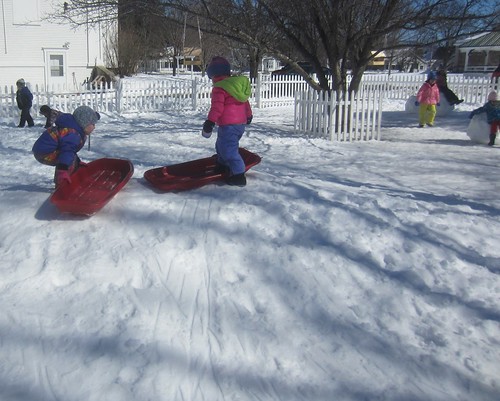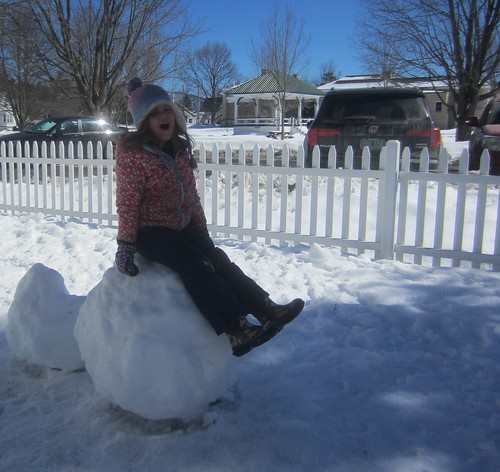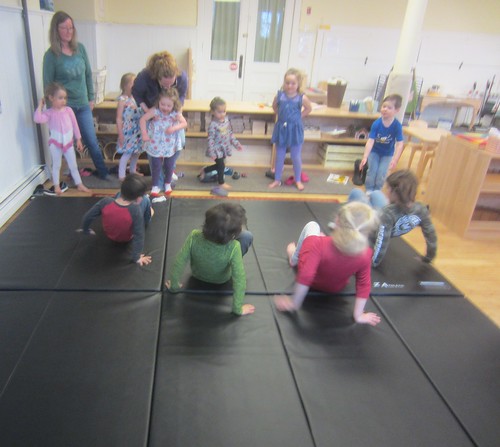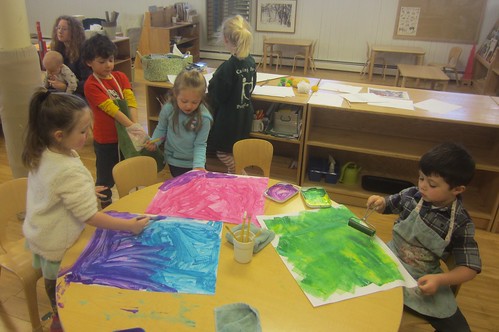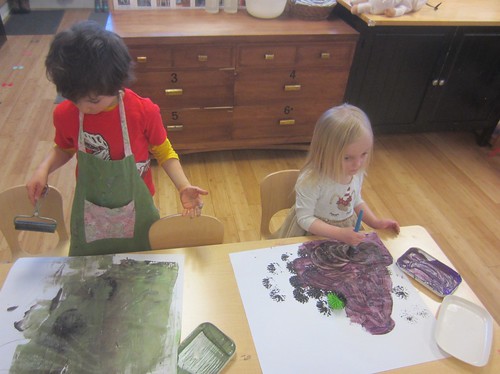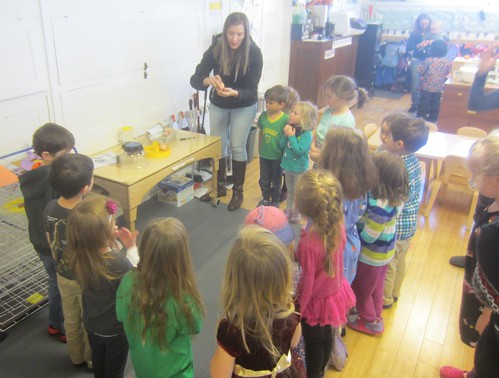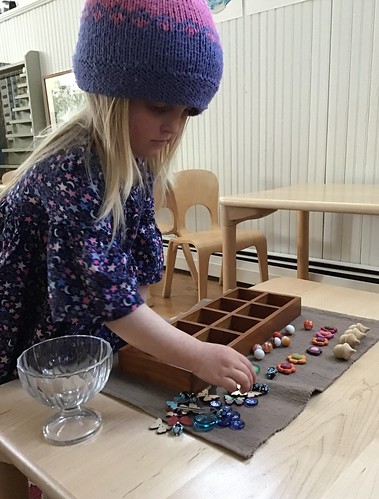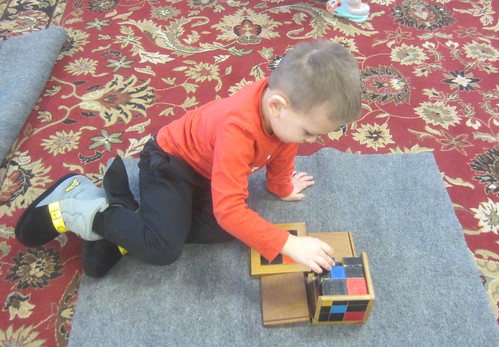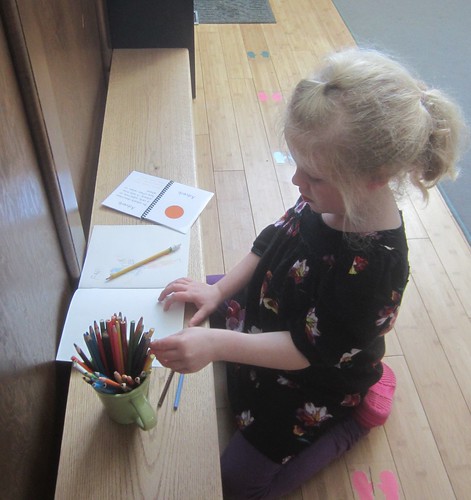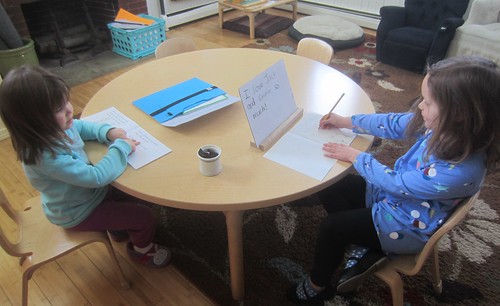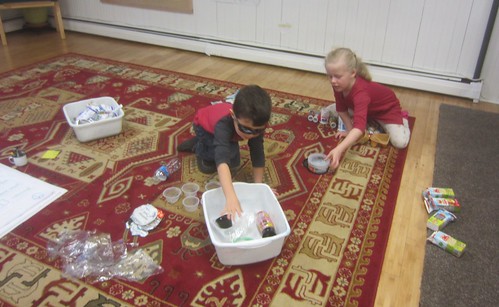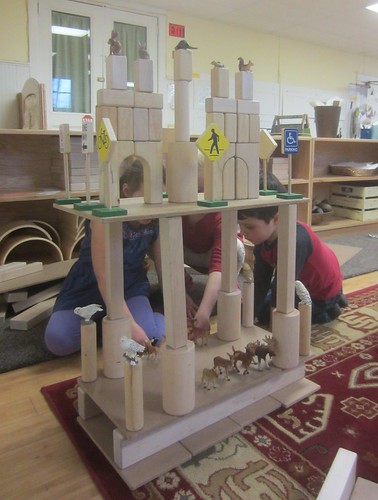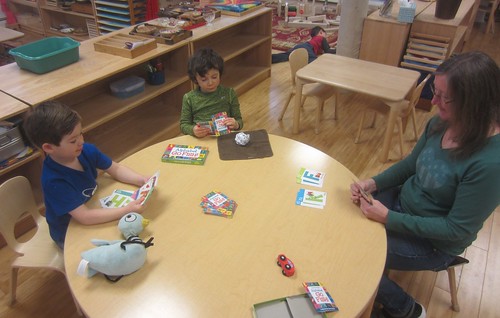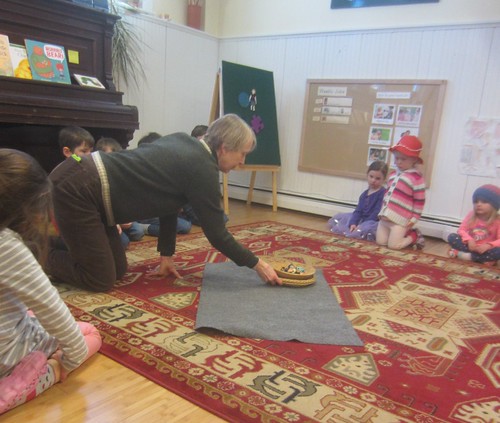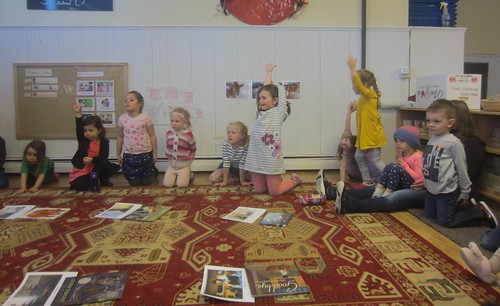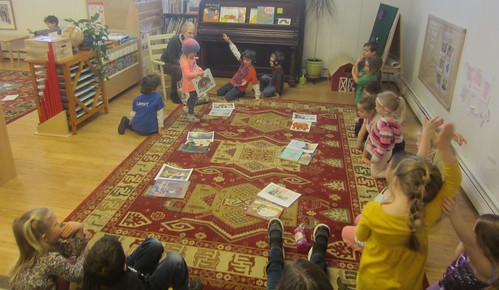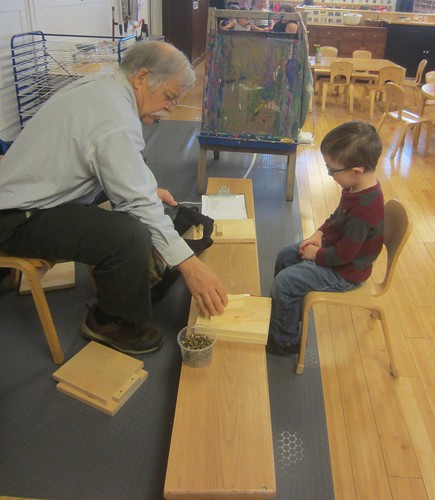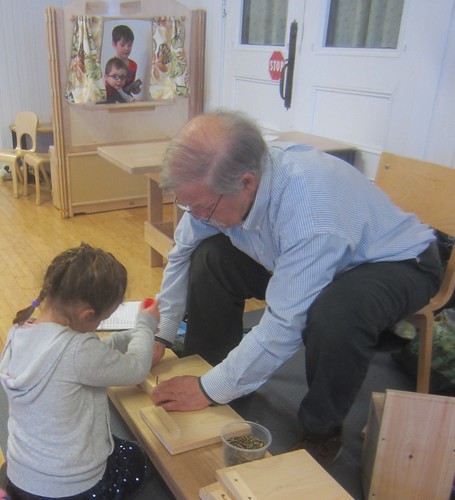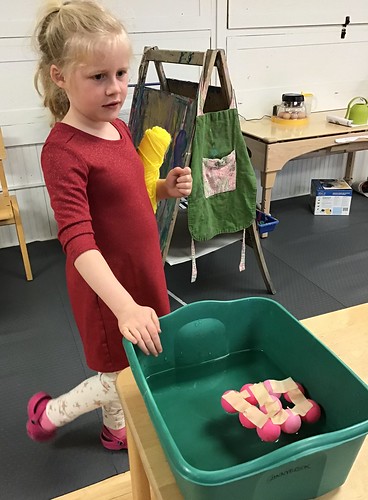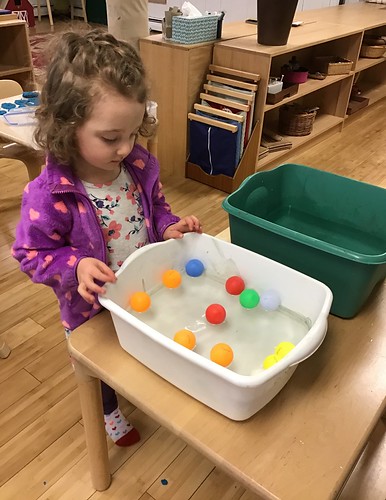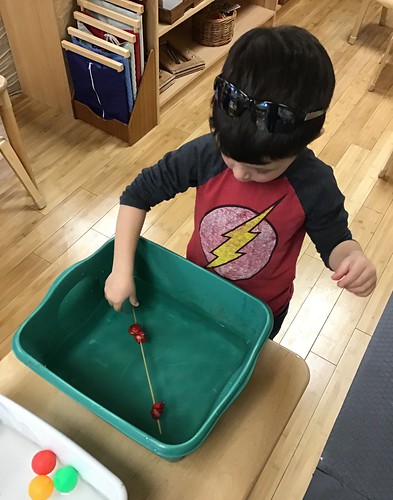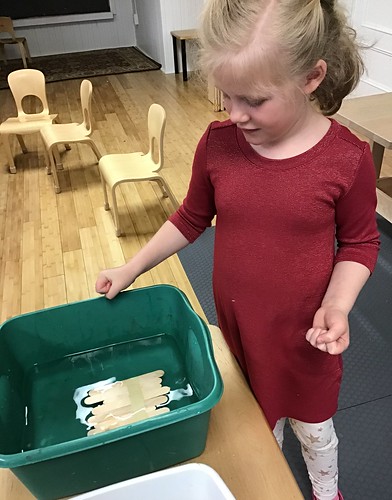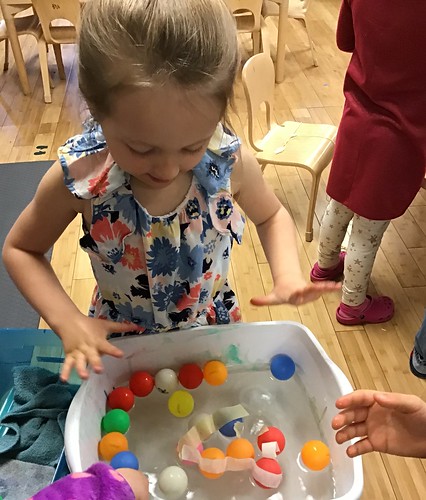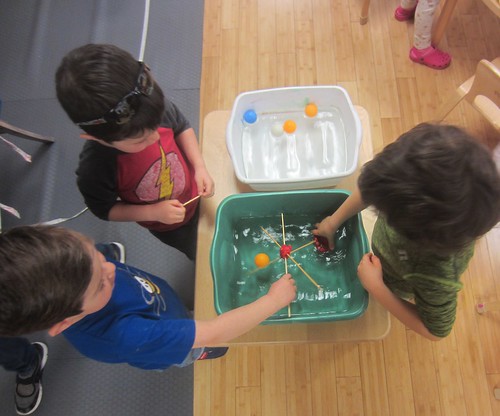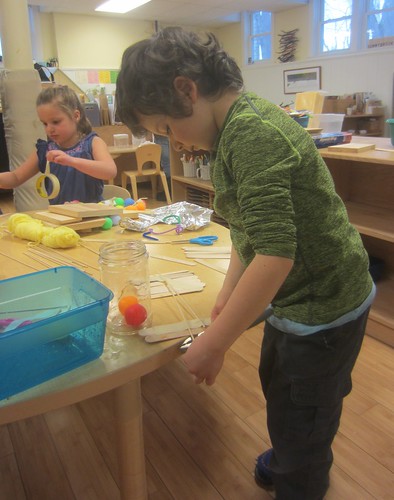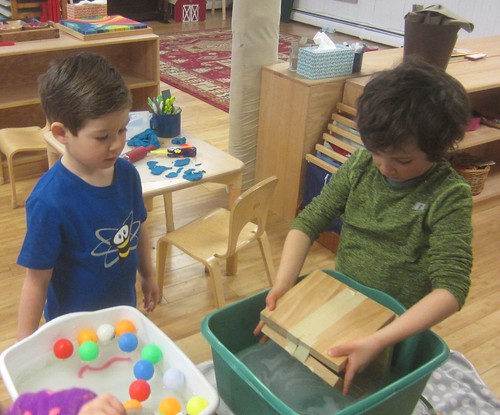As we anxiously await the arrival of spring, we continue to make the best of our snowy play yard. We did some sledding, puddle jumping, ditch digging, snowball sitting, potion making, house building, and ball kicking.
Rain kept us in on Friday, so we did some dancing, tumbling, and crab walking.
Monday students were introduced to the artist Eric Carle, who is well known for his picture book illustrations, including The Very Hungry Caterpillar and Brown Bear, Brown Bear. We learned that he creates his pictures by painting large sheets of tissue paper in different designs, then cuts and glues them together to create collage illustrations. Each student made a plan and drew a sketch of what they will collage. They then proceeded to paint papers using various implements, including paint brushes, a roller, and a spiny ball. Next week they will cut their papers into the needed shapes, then paste them together to create their pictures.
We read This Little Chick about a chick who learns to make the noises of the other farm animals by playing with them, and From Egg to Chicken about the life cycle of a chicken. The sensory table was set up in a safe place against a wall for the incubator, and we discussed how our job is to keep the eggs safe from being jostled by keeping our distance from the table. An egg cycle activity was also introduced, where you can follow the development of the chick within the egg. Alicia delivered and set up the incubator, then returned when it was 99.5 degrees to put in the eggs. One side of each egg was marked with an X and the opposite side was marked with an O, so we can track to ensure they are turning properly. We watched as the eggs entered the incubator, where they will stay for 21 days. We check them regularly to see if they have turned, if their temperature is steady, and if they have enough moisture. So far they are doing well! On Thursday morning we had a visit from some chicks that have already hatched, so we know what to look forward to.
After reading Horrible Bear, Henrietta Hen and Wolfgang Wolf chatted with us about how we speak to our friends. Henrietta shared a story about the time Wolfgang ate her snack, and she got so made she said something very unkind. She told Wolfgang he was not her friend anymore, which made him so sad. We discussed what else we could say if we get upset instead of something hurtful, such as “I am so sad that you ate my snack!” and how to resolve that.
Susan introduced Living vs Nonliving with the story Living and Nonliving. We learned that living things breathe, need water and nutrients or food, and can move on their own, even plants, who make their own food with sunlight, water, and carbon dioxide. We then did a group sorting project where we looked at models of real things and sorted them according to whether they are living (plants & animals –fungi, monera, and protist kingdoms were not discussed) or non-living (everything else).
Illustrators, artists who draw the pictures in books, were introduced. The children were introduced to 6 children’s book illustrators; Eric Carle, Jan Brett, Brian Pinkney, Lynley Dodd, Yangsook Choi, and Mo Willems. The children then sorted books by illustrator, placing them next to the photo of the illustrator who made the pictures in the book. They matched the styles to determine the illustrator.
The children began assembling their bird houses with Mr. Bond. They each attached the four small sections at the base of the walls that will support the floor. It was a lot of work screwing in all the screws! Everyone worked hard to turn and push them in, with a bit of help from Mr. Bond.
During music Susan continued to teach about pipes, and each child made their very own kazoo to take home. I am sure it was a restful afternoon/evening with all those kazoo players tooting around!
During Friday science we read the story about Penny the sailboat, built by grandpete and sailed around lake Winnipesaukee until her boards were too spongy and broken to sail any longer. We used the data we gained last week during our sink and float experiment to help guide us today with boat building. Our goal was to create a boat that could float. We discussed how a failure can be just as helpful as a success, as we can learn just as well from what didn’t work as what did. The children had a great time experimenting with the materials set out, creating boats from ping pong balls, aluminum foil, tape, wooden sticks, tongue depressors, wax, yarn, wood, and pipe cleaners. They tried out all shapes, sizes, and methods of adhering materials together. Next week they will use their knowledge to build a boat that will hold something!

